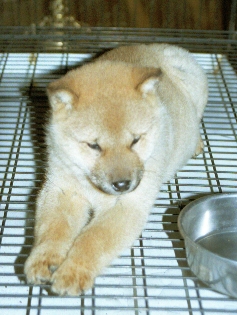|
|
Welcome to the Hokkaido-Inu Museum !


|
|
||||
|
The dogs have always hoped
to be with humans.
Wild ! Beautiful ! Strong ! Close ! 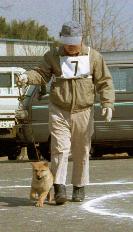

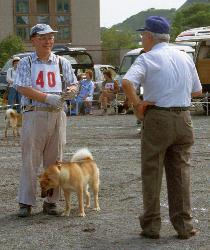 RAM (female) At the NKC dog show
|
|
Let's call the
Hokkaido-Inu
the Ainu Dog !
In the Ainu language, the word for dog is "seta."
In the Japanese language, the word for dog is "inu."
|
Thank you very much for visiting our museum.
The SETA PALACE is the pet name for the Hokkaido-Inu Museum. YUPO, AK, RAM and SETA live in this museum. They are Hokkaido-Inu dogs. Their breeding room was named the SETA PALACE at first, but when our house was opened as a museum we gave the name to our museum . 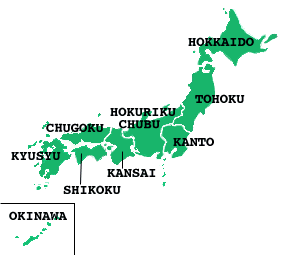
The Hokkaido-Inu is a Japanese dog breed. Because
the Ainu people (the indigenous people of Hokkaido) bred the dog to use for
hunting bears and deer, the breed has also been known as "the Ainu-Ken (Ainu
Dog)."
The strength and physique of this breed enables the dog to withstand severe cold, heavy snowfalls, dense forests, and the rugged terrain in Hokkaido. 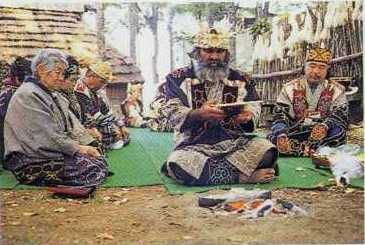 The Ainu people (From the Ainu Museum)
The Ainu people (From the Ainu Museum)
The dog usually obeys the owner with gentle
responsiveness and likes a lot of affection. However, it is very brave and
shows manly features.
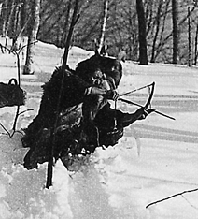 (From the Ainu Museum)
(From the Ainu Museum)
According to one of the dog journals in Japan, the
Hokkaido-inu is not kept indoors. But there are no problems if the dog
spends time outdoors as well. If you keep your dog only indoors, your dog
may bite you because it needs hard exercise.
We let YUPO, AK, RAM and SETA run loose in our back yard, which has a high fence. They bark at dogs or cats that are passing, and also howl when they hear an ambulance siren. Through such behavior, they satisfy their wild instincts. However, when they spend time indoors, they satisfy their instincts for human affection. 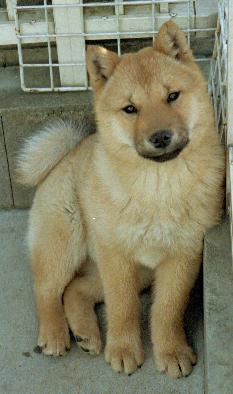
The Hokkaido-Inu is overly sensitive and has a
fiery disposition, and may bite a person occasionally. So the breed is said
to be hard to deal with.
We propose some hypotheses on the characteristics
of the dog.
(1) Because it is very cold in Hokkaido, only dogs
that became friendly with the Ainu people could live through the entire
winter. The inherited character would be accumulated by natural selection.
Thus, the dogs desire to be with humans and like a lot of affection.
(2) The Ainu people selected only dogs that helped
them hunt brown bears; therefore, their fiery disposition would have been
formed. Now we have lots of dogs that do not bite humans, because the dog is
now kept as a companion.
(3) A wolf living in a cold area is fierier than
one in a warm area. The former has withstood the severe cold. Since the
Hokkaido-Inu has lived in cold area, the dogs would also have such a
disposition.

If you keep the dog, please play with him often and
call out to him, dealing with him as a member of your family. On the other
hand, being wild, he also needs rigorous training.
If you keep him to understand the characteristics of the breed, we are sure you will be satisfied with him as a companion.
Our dogs guard our back yard in the daytime and
guard the exhibit in our museum at night. Through such work, they satisfy
both their wild instincts and their affectionate nature.
Please make a study trip to our museum where the
Hokkaido-Inu, related plants and animals, etc. are on exhibit.
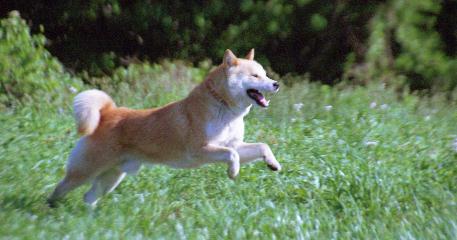
This museum was introduced in
the Yomiuri
(Japanese) on August 6, 1997.
|
|||||||||




